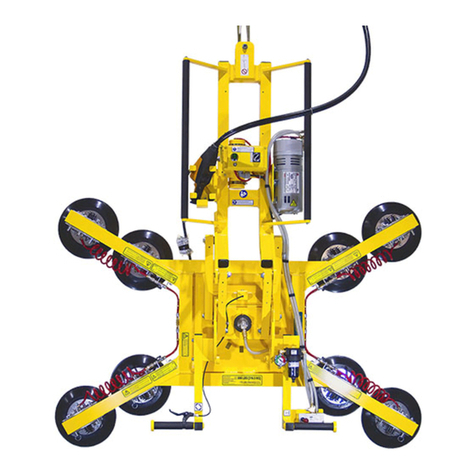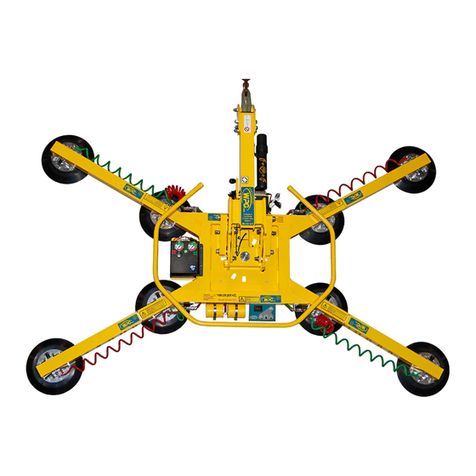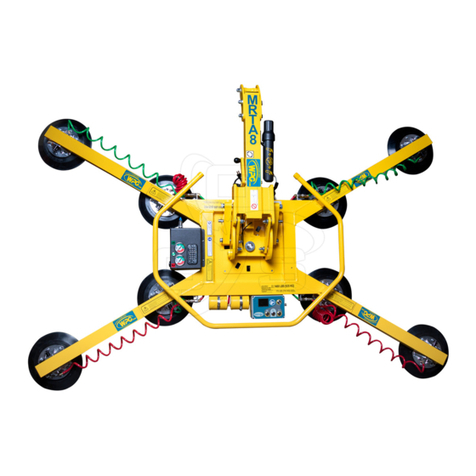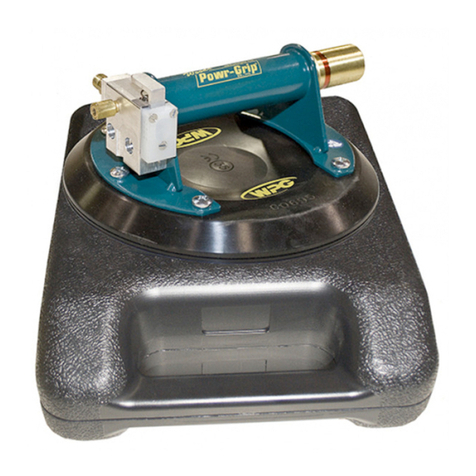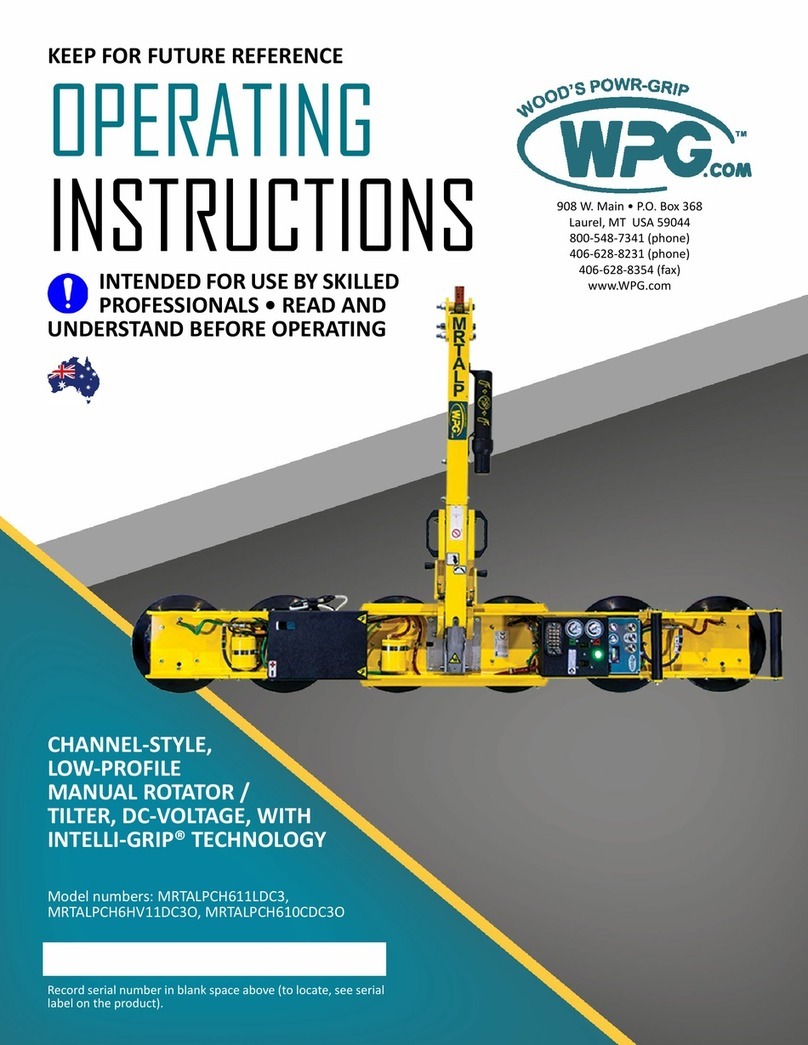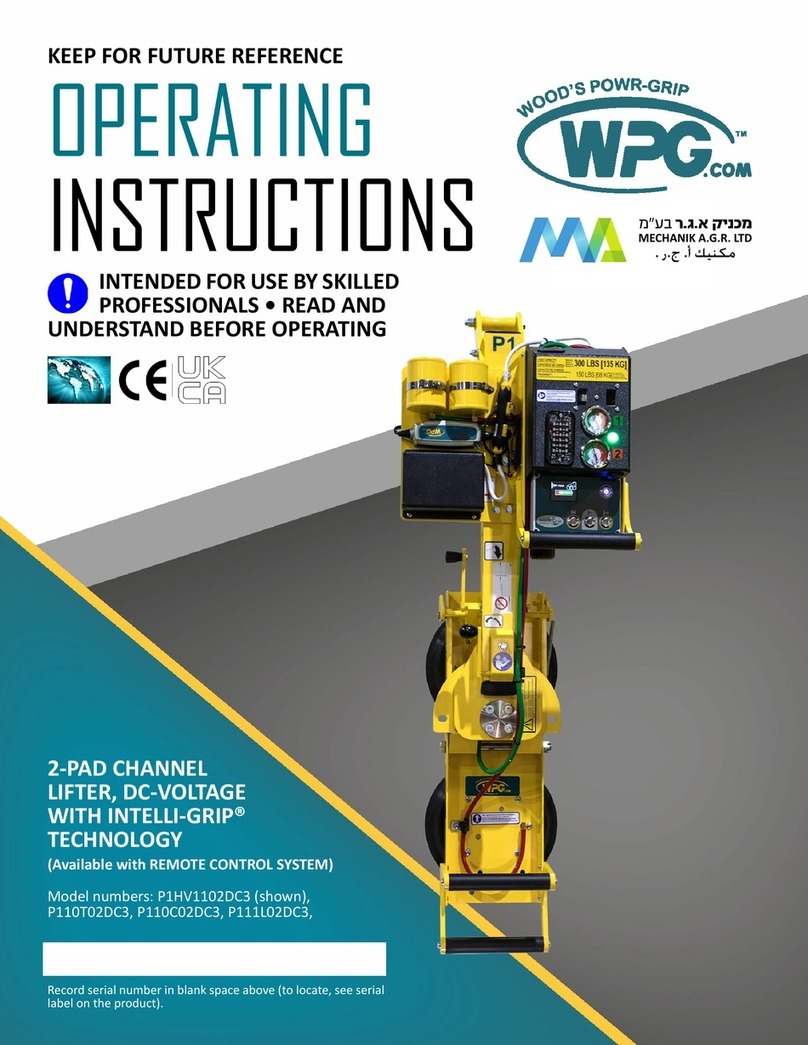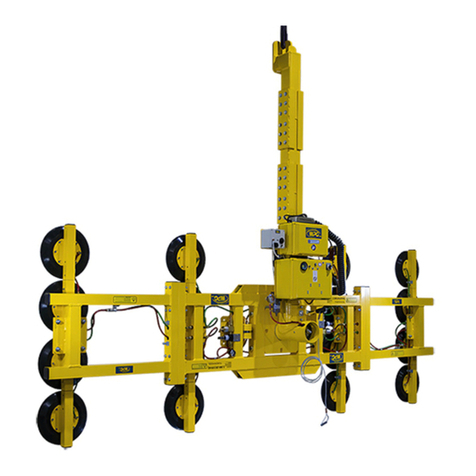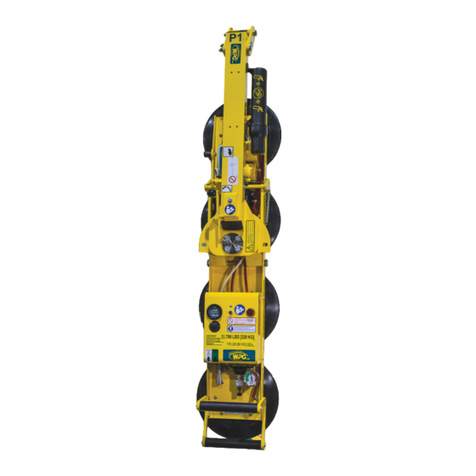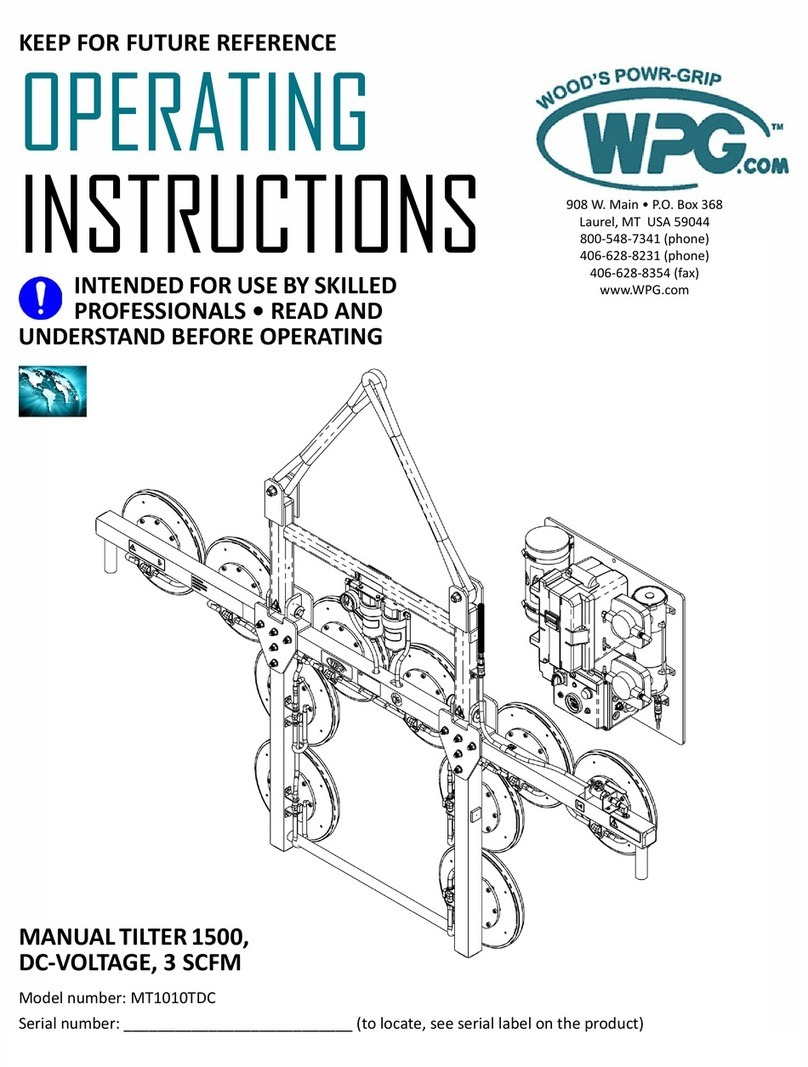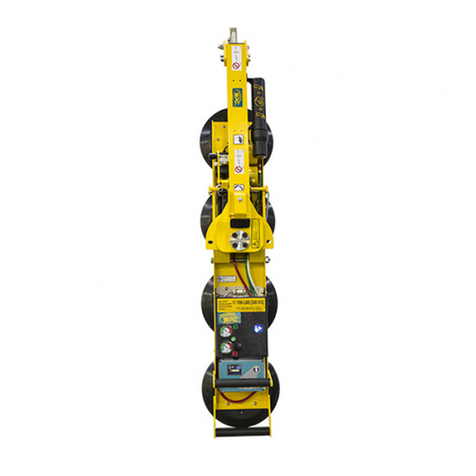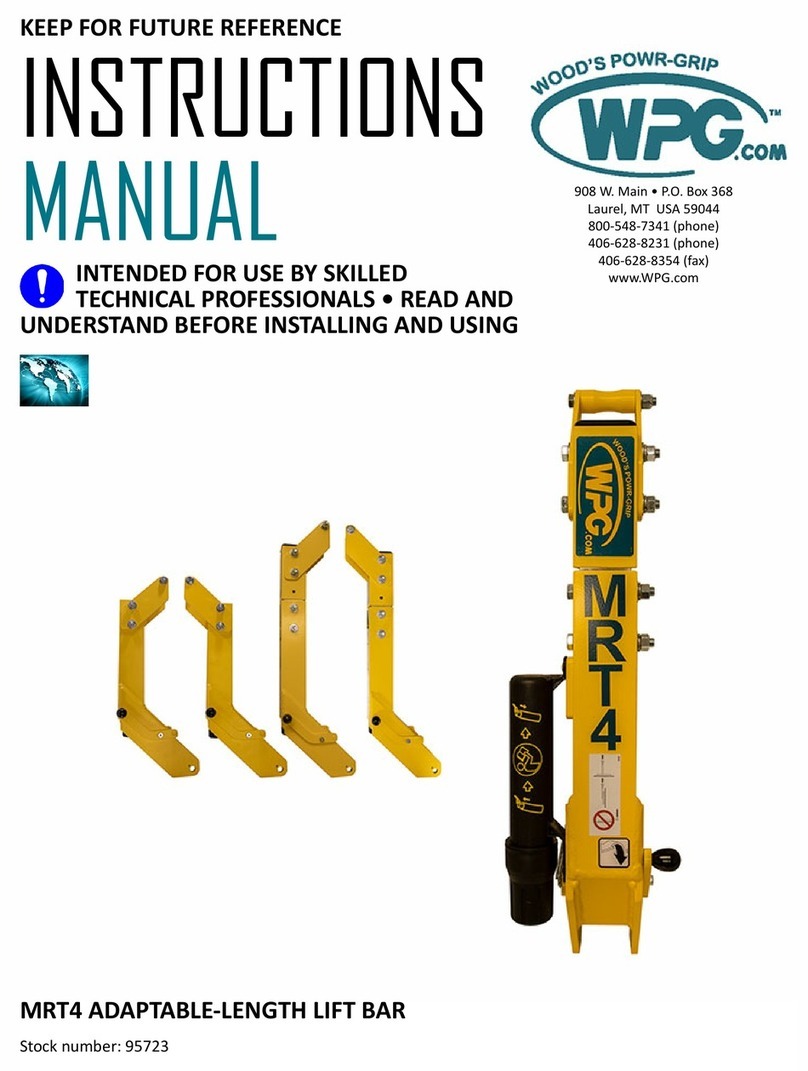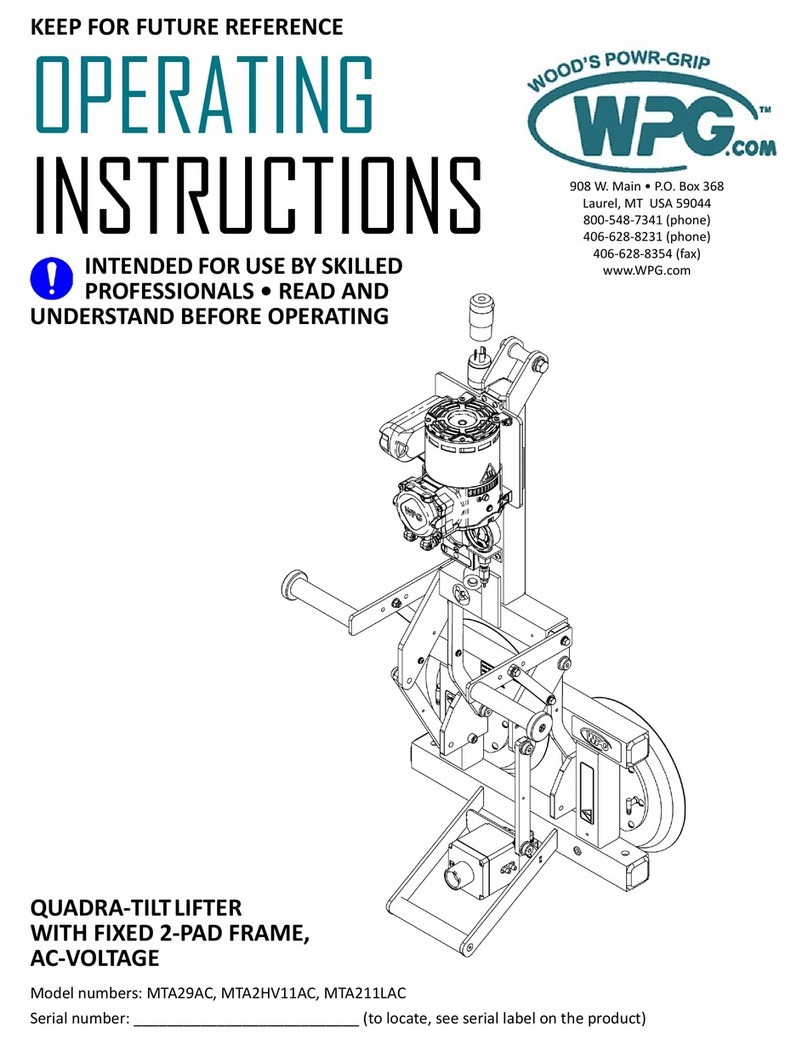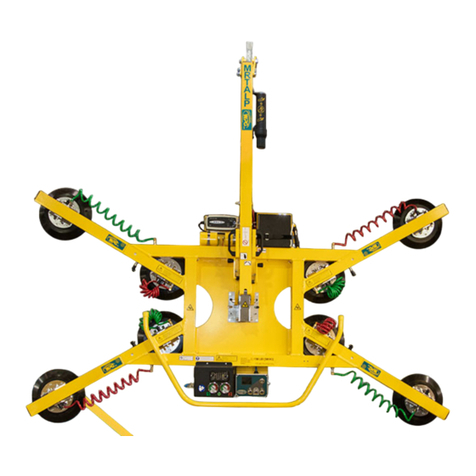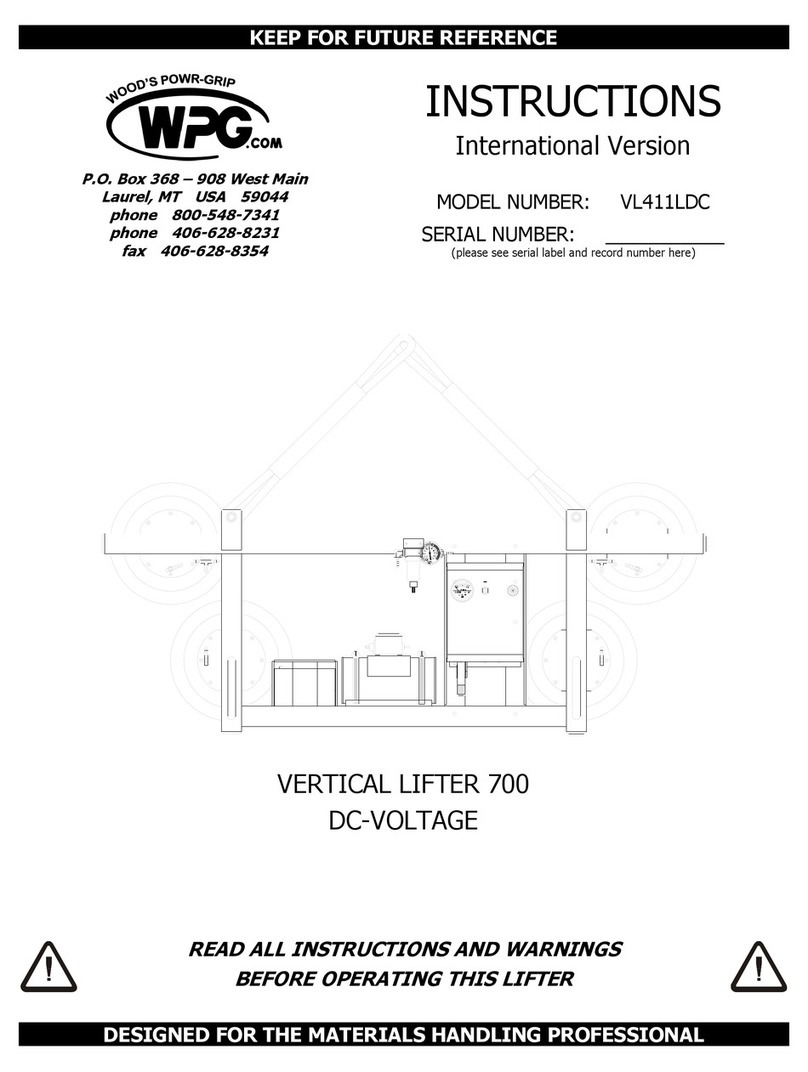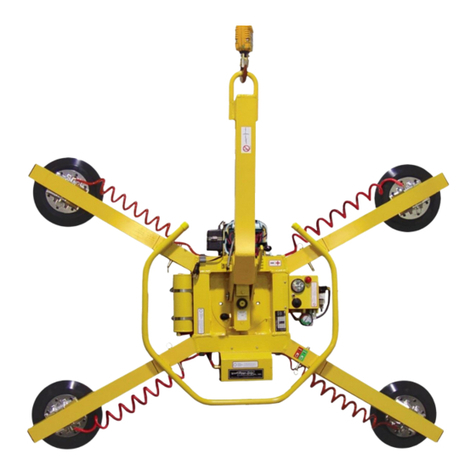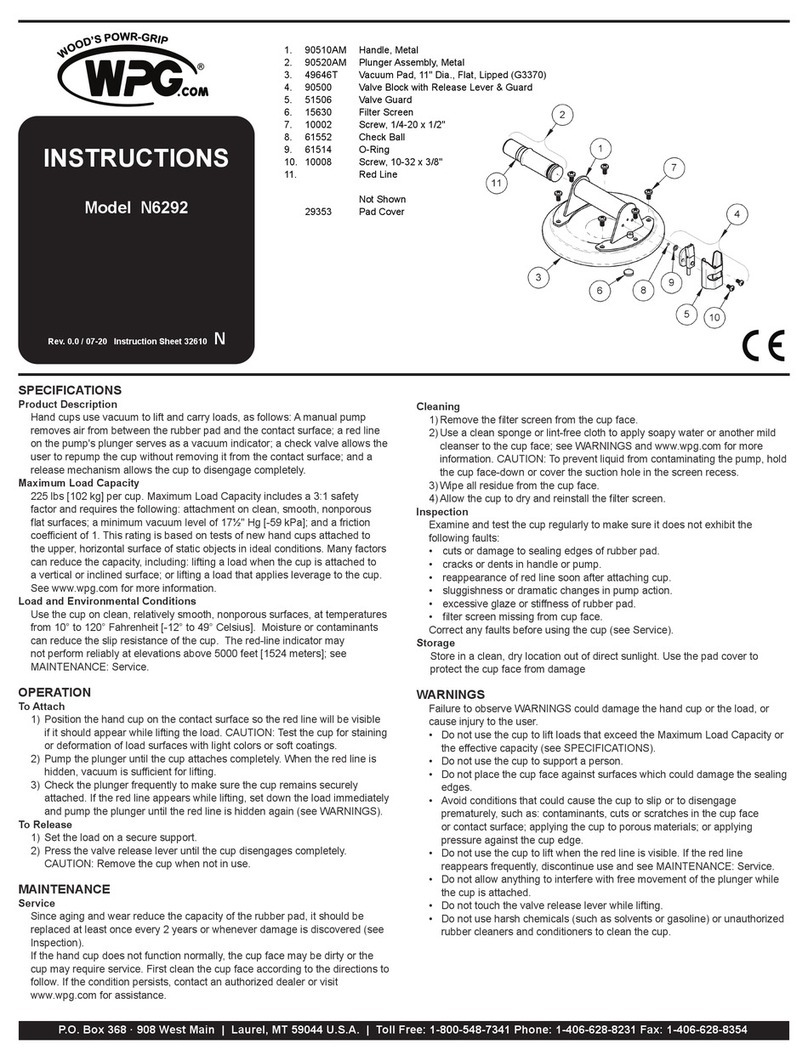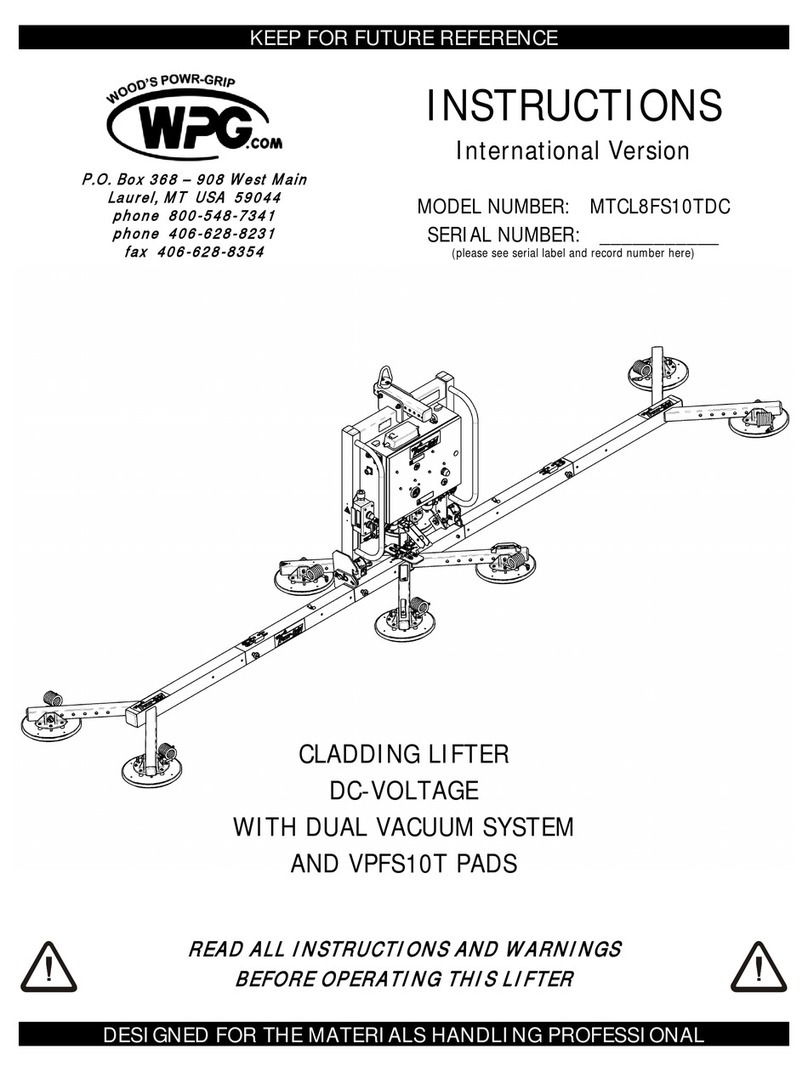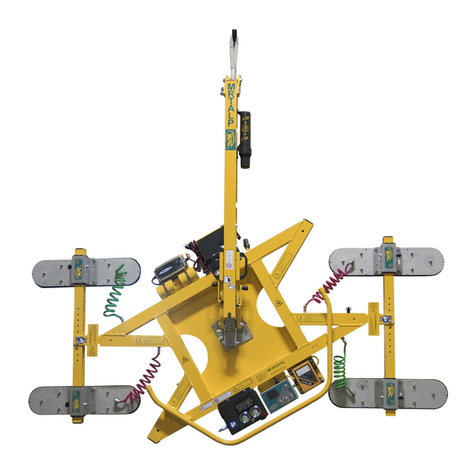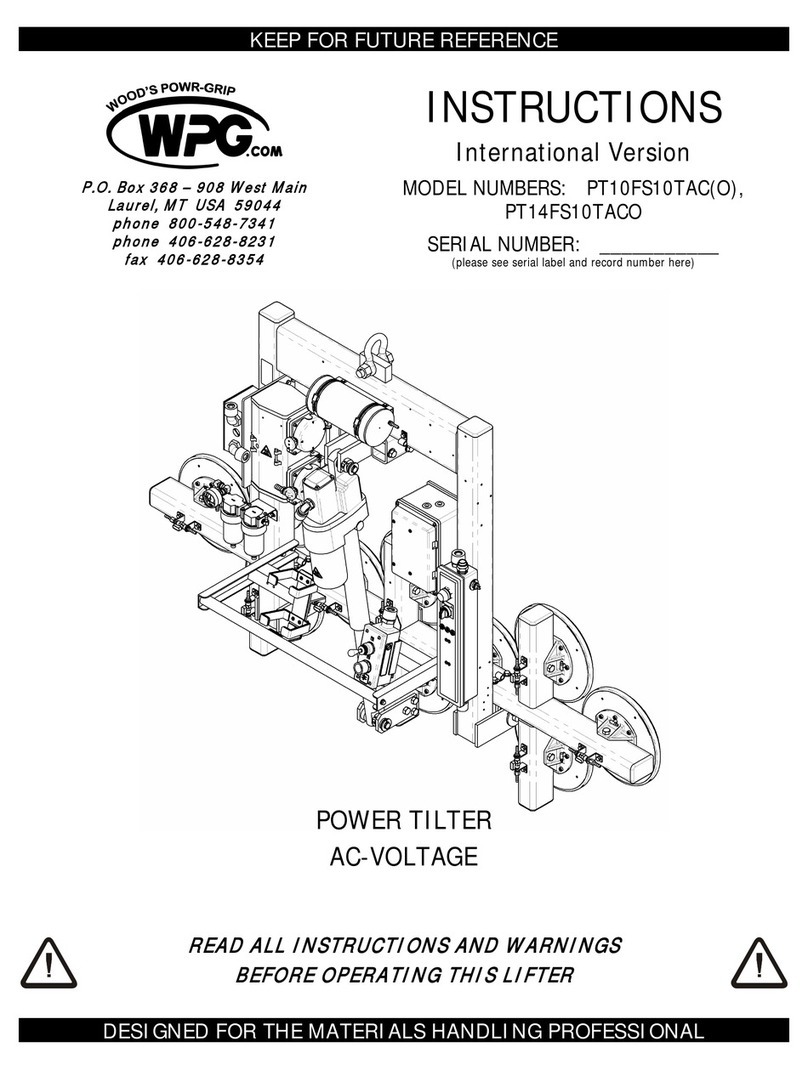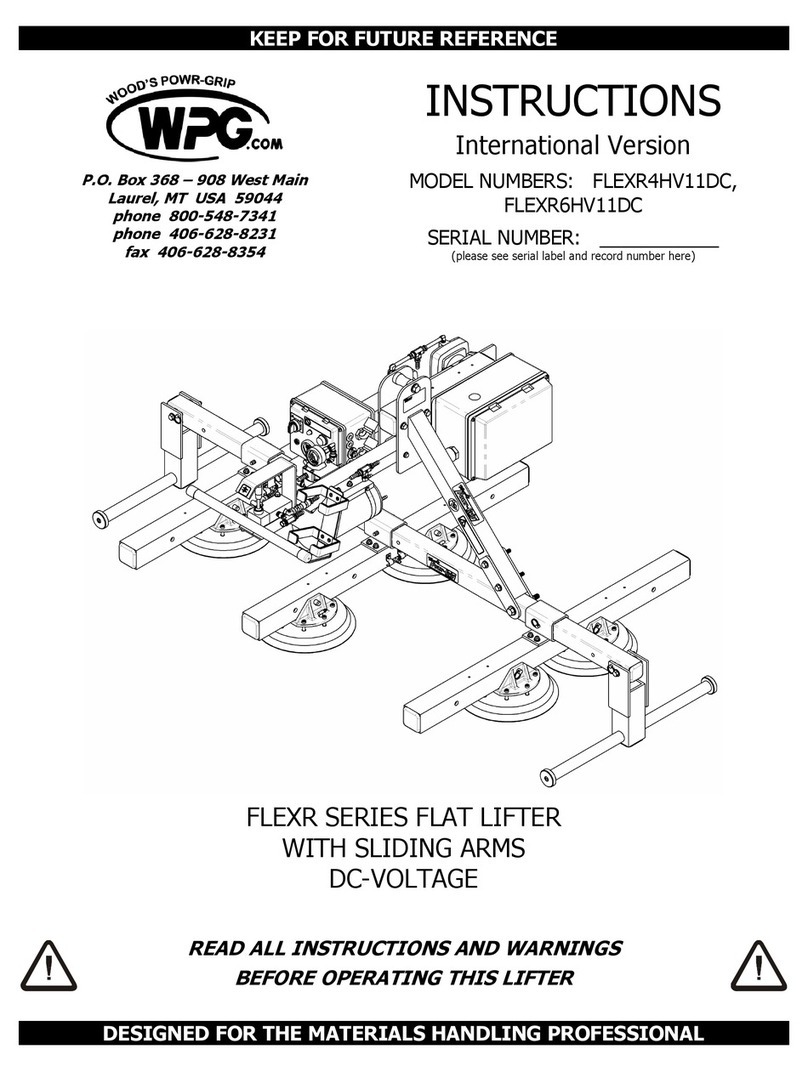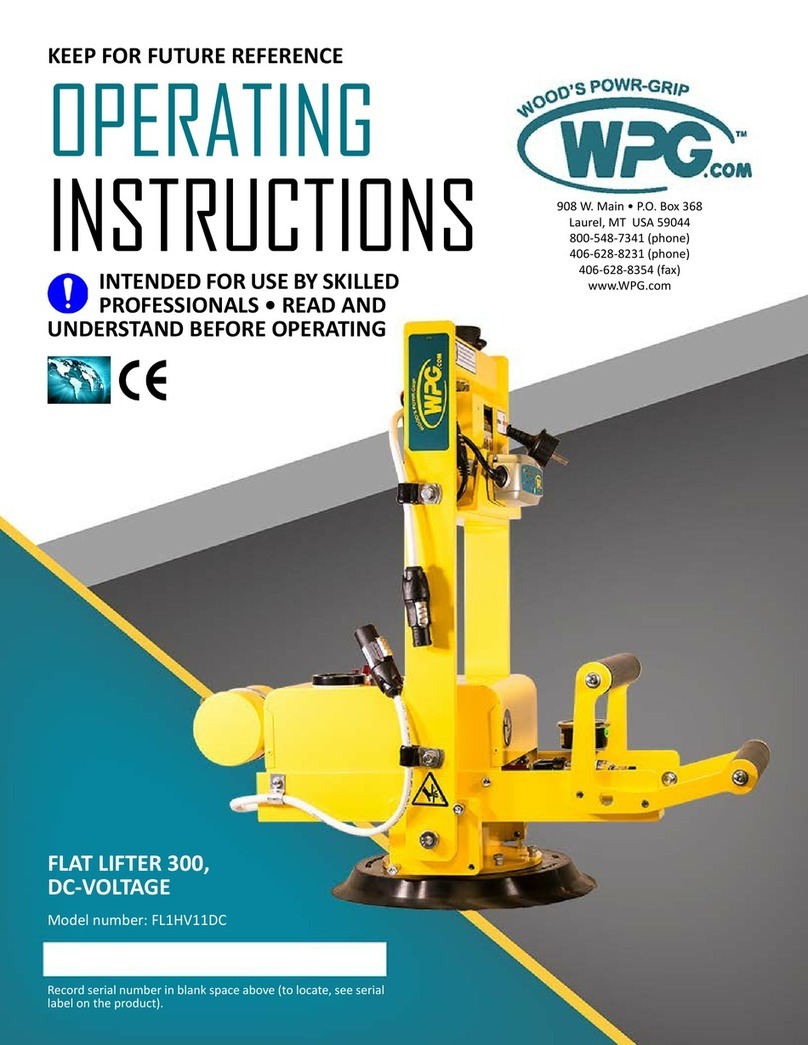
Rev 29.0/10-19 MRT4-DC: #350703
Product
Description
Designed for use with hoisting equipment, MRT4-DC lifters support loads using vacuum and manipulate
loads using manual 360° rotation and manual 90° tilt motions.
Model
Number MRT49DC MRT4HV11DC MRT411LDC
Vacuum Pads1
(4 each, standard rubber)
1...... Available with other rubber compounds for special purposes (see www.WPG.com).
9" [23 cm] nom. diameter
(Model VPFS9)
10" [25 cm] nom. diameter,
lipped (Model HV11)
11" [28 cm] nom. diameter,
lipped (Model G3370)
Pad Spread2
2...... The illustrations under “TOCHANGE THE PAD FRAME CONFIGURATION” on page 9 show the Pad Spread for all approved pad frame configurations.
---------------------------- (to outer edges) ----------------------------
Length ‒Maximum 75¼" [192 cm] 77¼" [197 cm] 78¼" [199 cm]
Length ‒Minimum 29¾" [76 cm] 31¾" [81 cm] 32¾" [83 cm]
Width ‒Maximum 46½" [119 cm] 48½" [124 cm] 49½" [126 cm]
Width ‒Minimum 12¾" [33 cm] 14¾" [38 cm] 15¾" [40 cm]
Maximum Load
Capacity3
3...... The Maximum Load Capacity is rated at a vacuum of 16" Hg [-54 kPa] on clean, smooth, nonporous flat surfaces with a friction coefficient of 1. Pad
compound, load rigidity, strength, surface conditions, overhang, angle, center of gravity and temperature can also affect the lifting capacity. A “qualified
person” should evaluate the effective lifting capacity for each use (see definition under “Rated Load Test” on page 28).
Per-Pad 125 lbs [56.5 kg] 150 lbs [68 kg] 175 lbs [80 kg]
Total 500 lbs [225 kg] 600 lbs [270 kg] 700 lbs [320 kg]
Lifter
Weight 135 lbs [62 kg]
Power
System 12 volts DC, 3.5 amps
Battery
Capacity 7 amp-hours
Rotation
Capability Manual, 360°, with latching at each ¼ turn (when required)
Tilt
Capability Manual, 90°, with automatic locking in vertical position
Product
Options See separate instructions about options.
Operating
Elevation Up to 6,000' [1,828 m]
Operating
Temperatures 32° — 104° F [0° — 40° C]
Service
Life 20,000 lifting cycles, when used and maintained as intended4
4...... Vacuum pads, filter elements and other wear-out items are excluded.
!!–CE–!! This symbol appears only when a CE Standard is different from other applicable standards. CE requirements are
mandatory in the European Union, but may be optional elsewhere.
ASME Standard
BTH-1 Design Category "B", Service Class "0" (see www.WPG.com for more information)
SPECIFICATIONS
